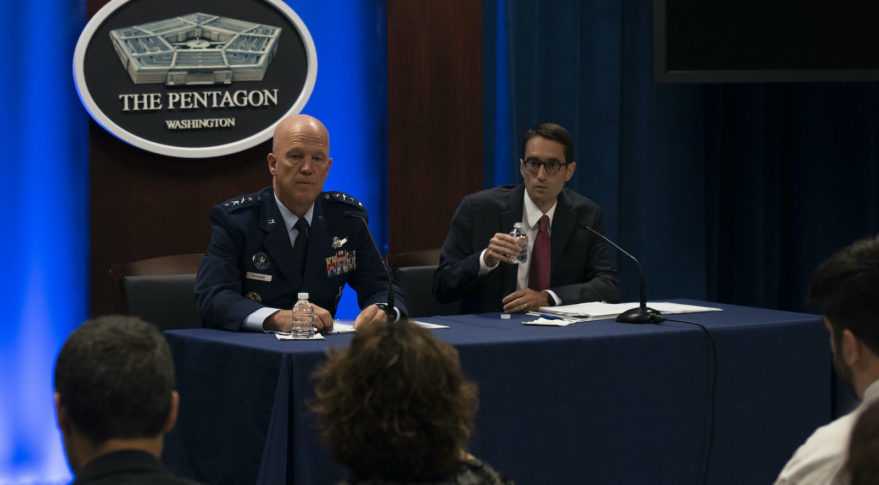
Steve Kitay: The establishment of a U.S. Space Force is a major new development that has to be reflected in the DoD strategy.
WASHINGTON — The Pentagon is working on an updated space strategy that would replace the 2011 version issued by the Obama administration.
“Our evolving defense space strategy is still in development and in coordination,” Deputy Assistant Secretary of Defense for Space Policy Steve Kitay said Feb. 6 at a Mitchell Institute event on Capitol Hill.
Kitay said the establishment of a U.S. Space Force as a separate military service is a major new development that has to be reflected in the DoD space strategy. The plan of action for space, he said, will build on the Trump administration’s 2018 national defense strategy that says DoD should prepare to face competition from rising military powers like China.
The space strategy is being developed around three pillars — maintaining space superiority, providing space support to U.S. and allied forces, and ensuring stability in space, said Kitay.
DoD for decades has carried out these national security space activities but has to confront the new reality that adversaries have more advanced weapons designed to target U.S. military satellites and deny the United States a key military advantage. What has changed is that “now we have to defend U.S. and allies to secure the domain,” he said. “This is a new mission area.”
Space similar to maritime security
The thinking in the DoD space strategy, said Kitay, is that defending U.S. access to outer space is comparable to how the Navy provides security at sea, enabling international trade and safe passage of vessels in common waters.
“We have to maintain persistent presence and provide for safe transit to and from space,” Kitay said. Because the United States is so dependent on space, “we have the most to lose from instability in the domain.”
“Naval power has helped guide my thinking,” he said.
Kitay insisted that there are “strong analogies” between space and naval power. The seas and outer space are “indispensable sources and conduits of national power, prosperity and prestige,” he said. Both are critical to trade, to the economy and diplomacy. As the space economy grows, “we must maintain security and access to space.”
The Space Force also will have to think more broadly about what space security means, Kitay said. That means, for example, not being restricted to the traditional orbits where national security satellites are deployed. The military focuses on low, medium and high Earth orbits. NASA thinks beyond that, to cislunar space, Kitay said. “From a national security perspective, exploration is not our mission. But if we see threats beyond geosynchronous orbit we need to be ready for that, have space situational awareness extend beyond those regions.”
Space Force needs help to succeed
Kitay was an early proponent of a separate space service and one of the architects of the 2017 House Armed Services Committee bill that proposed creating a Space Corps under the Air Force.
He cautioned that the Space Force should prepare to endure growing pains and that both DoD and Congress need to help the new service move forward.
A major concern is whether the Space Force will be given breathing room to develop its own culture. “We must embrace originality,” said Kitay. “Space is different from air … We have to make sure that the Space Force is not simply part of an Air Force rebranding.”
Kitay said about 15,000 space professionals will form the core of the service. “It’s an elite group,” he said. “We don’t want to create unnecessary layers of bureaucracy.” He said the space service members (they don’t have an official name yet) should be empowered but also receive clear guidance and “prudent oversight to enable a culture of speed and innovation.”
The 2020 National Defense Authorization Act that created the Space Force gives DoD and the Air Force some flexibility to tweak the organization, but with conditions, said Kitay. “Congress made it clear they want to be part of this process,” he said. Congress set strict reporting requirements.
With Space Force continually the subject of jokes and memes, DoD will have to step up outreach efforts and inform the public about what this service is about, Kitay suggested.
“What we have to avoid is submitting to bureaucratic inertia,” he said, “It’s imperative to think differently.”
Sandra Erwin
Source News
No comments:
Post a Comment
Note: Only a member of this blog may post a comment.